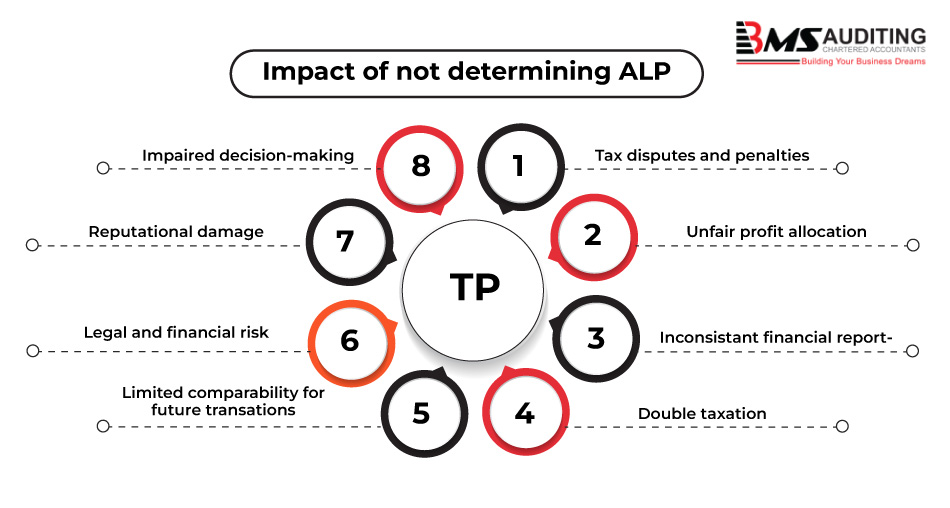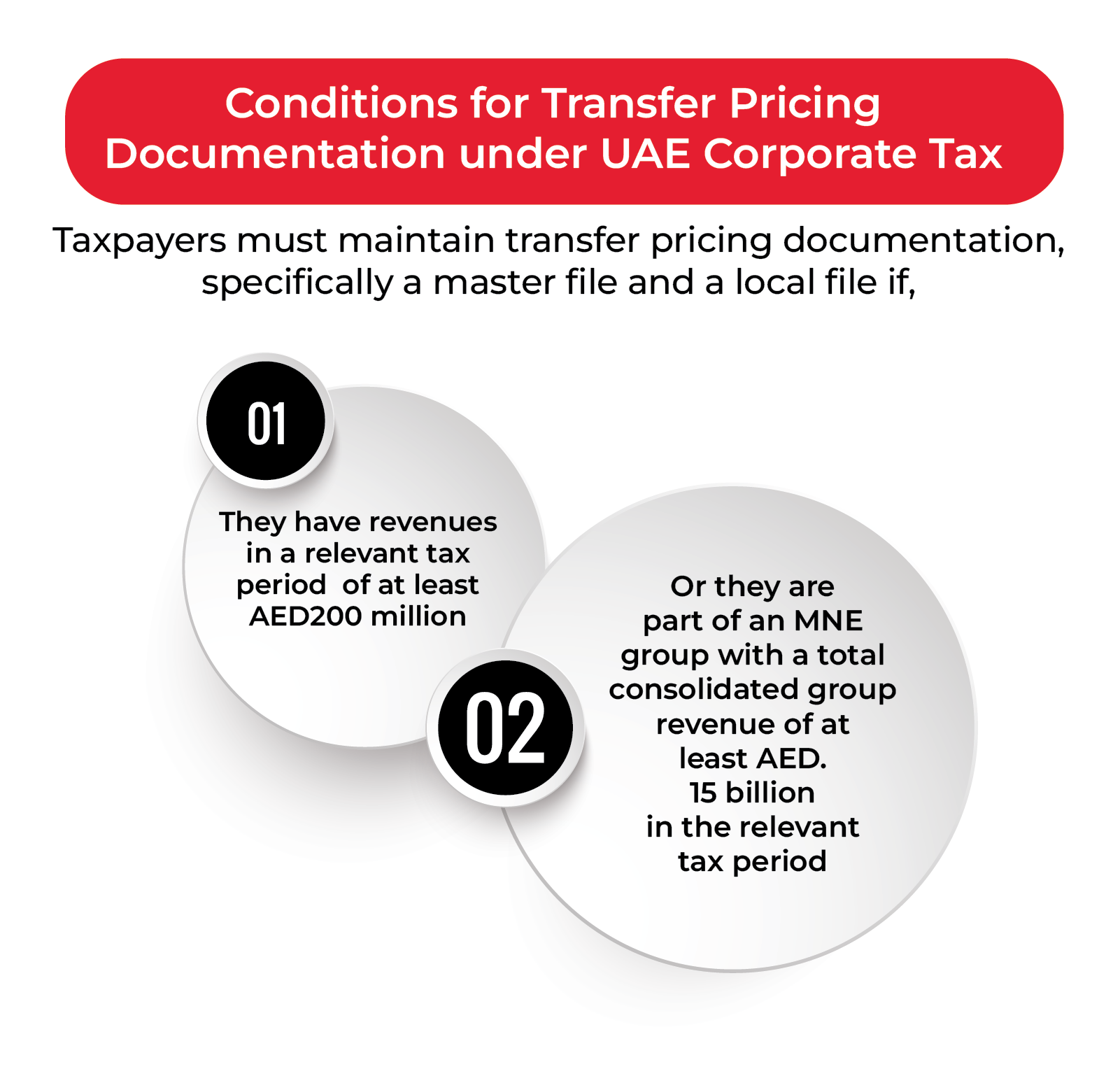Transfer Pricing in UAE documentation helps companies in determining their tax liability based on the transactions while filing for corporate tax returns. It may impact the amount of taxable income declared in the former, and the transfer pricing documentation must be submitted as part of the corporate tax returns if required by the FTA.
The application of transfer pricing procedures has grabbed abundant attention globally with the increasing importance of transfer pricing on corporate taxation in the UAE. Businesses involved in cross-border transactions realize the importance of transfer pricing.
Large and small business entities suffer high risk as a result of control by the tax department and regulatory standards. Most global organizations plan for cost management options provided by the best transfer-pricing model.
BMS Auditing helps to develop a tax-effective strategy that optimizes compliance with laws and regulations, thus meeting the transfer pricing requirements. Before that, let us educate you about transfer pricing in UAE and its regulations.
What is Transfer Pricing in UAE?
Transfer pricing refers to setting prices for goods or services traded between different units or divisions of a multinational corporation. In the UAE, the transaction between entities is governed by the transfer pricing regulations which were further impacted under the UAE corporate tax regime.
The transfer pricing rules in the UAE are designed to ensure that related parties engage in transactions at arm's length, meaning that they transact with each other at prices that are equivalent to those that would be charged in comparable transactions between unrelated parties.
What is an Arm Length Price (ALP)?
The arm's length price (ALP) is the price of a transaction between two related firms that would have been paid if the transactions had taken place between two comparable independent and unrelated parties, with just commercial consideration.
The arm's length principle is based on the idea that related parties should transact with each other at prices that would result from the normal competitive market forces of supply and demand.
The UAE corporate tax law has embraced the Arm's Length Principle for transfer pricing rules in OECD Transfer Pricing Guidelines. Transfer pricing guidelines and the arm's length principle must be followed in all related party transactions with connected persons.
Determining ALP for Services in Transfer Pricing
In the global business environment, determining Arm's Length Price (ALP) for services exchanged between related entities within MNEs is of great importance. If carried out correctly, this process can have significant effects on tax liabilities, financial reporting, performance evaluation, and profit sharing. Transparency is promoted and potential tax disputes are reduced by ensuring a fair and Transfer Pricing-compliant service.

In Transfer Pricing the services can be divided into two types:
- Low-value Added Services(“LVAS”)
- High-value Added Services (“HVAS”)
Characteristics of Low Value added Services
- Routine Support or Administrative services
- They Involve Lower Complexity
- The Services have Minimal Risk
- No Creation or Enhancement of Intangibles in LVAS
Characteristics of High Value Added Services
- R&D, Product design, and Technical Services
- HVAS involves higher Complexity and high risk
- Creation or Enhancement of Intangibles
Challenges in Determining ALP
Determining the ALP has several challenges and a few are listed below:
- Limited Availability of Comparable data
- Consistency across Jurisdictions
- Challenges in Quantifying Benefits
- Allocating costs and risks
- Evaluating the economic circumstances
- Complexity in assessing the value contributed.
Factors Affecting the Determination of TP
- Contractual terms: Agreements spelled out in contracts that specify the parameters under which a business partnership will operate.
- Economic conditions: Elements and situations affecting the state of the economy and market dynamics.
- Unique expertise and specialized skills: Specialized knowledge and talents that distinguish people or things from one another, such as unique competence.
- Functions performed: Tasks and obligations are taken on in a professional or operational setting.
- Risk assumption: Accepting the unknowns and exposure to unfavorable outcomes.
- Intangible contribution: Adding value through intangible assets including patents, trademarks, and intellectual property.
Who are the Related Parties?
A related party is an individual or entity in UAE that has a prior relationship with a business that is subject to the Corporate Tax regime due to ownership, control, or kinship (in the case of natural persons).
Who are Connected Persons?
A connected person is an individual or related party who has an ownership interest in or controls the taxable person. For example, A director or officer of the taxable person to the fourth degree of kinship or connection, including via birth, marriage, adoption, or guardianship. You can also be a connected person if you are a partner in an unincorporated partnership or any other partner in the same partnership.
Impact of Transfer Pricing on UAE Corporate Tax
As declared by the Ministry of Finance, transfer pricing laws ensure conducting transactions between related parties in arm’s length terms- transactions between independent parties. Businesses in the UAE should follow the rules of transfer pricing and document requirements as per the OECD (Organization for Economic and Co-operative Development) guidelines.
Generally, the Federal Tax Authority evaluates and studies the related policies, documentation, and inter-company and inter-group transactions for consistent transactions with the transfer pricing laws.
Corporate Tax Returns and Transfer Pricing
In the context of corporate tax returns in the UAE, transfer pricing may have an impact on the amount of taxable income that a company declares.
If a company is found to have engaged in transfer pricing practices that artificially reduce its taxable income in the UAE, the FTA may make adjustments to the company's tax liability based on arm's length principles.
The local file and country-by-country (CbC) report, which are part of the transfer pricing documentation, must be submitted along with the corporate tax returns in the UAE if the company meets certain criteria.
Need For Transfer Pricing Documentation
The transfer pricing rules in the UAE require companies to maintain documentation to support the transfer pricing arrangements for their cross-border transactions. This documentation must include an analysis of the transfer pricing policy, a description of the transactions and their economic context, and an analysis of the transfer pricing method used.
The documentation of the Transfer Pricing helps businesses as follows,
- To ensure valuing transfer pricing requirements for setting the prices and other conditions and reporting income from similar transactions in return
- To inform tax administrations well on conducting a detailed risk assessment
Transfer Pricing Documentation Conditions for Corporate Tax in UAE
As per Ministerial Decision No. 97 of 2023, the UAE government announces the conditions for taxable persons to maintain Transfer Pricing Documentation (Master File and Local File) for UAE Corporate Tax. The conditions are given below,
1. A Taxable Person who has transactions with Related Parties and Connected Persons having a total consolidated group Revenue of AED 3,150 million should prepare Transfer Pricing Documents.
2. A Taxable Person who has a Revenue of AED 200 million in the relevant Tax Period.

3. The Local file should include transactions or arrangements with all of the following Related Parties and Connected Persons if the taxable person is a
- A Non-Resident Person.
- An Exempt Person.
- A Resident Person who is elected for Small Business Relief under Corporate Tax Law.
- A resident who is subjected to a different corporate tax rate
4. The Local file should not include transactions or arrangements if the taxable person is,
- A resident who is not a natural person and a juridical person
- A Natural Person who has independent transactions from parties and arrangements.
- A Juridicial person having independent transactions from unincorporated partnerships.
- A Non-resident is subject to the same Corporate Tax rate as that applicable to the income of the Taxable Person.
Note:
Related Parties: Related Parties are taxable persons with Two or more natural persons who are related within the fourth degree of kinship or affiliation, including by way of adoption or guardianship.
Connected Persons: A connected person is an indirect or a direct owner or director or a related party of a Taxable person.
We, BMS Auditing, the top audit firm in Dubai have the best auditors and Tax consultants in UAE who can help you prepare the documentation as per the guidelines for Transfer Pricing under the Corporate Tax in UAE.
Document Model of Transfer Pricing under OECD Guidelines
According to the OECD guidelines for Transfer Pricing, authorities use a 3-tier technique for the documentation including:
- Master file: standardized information for all group members
- Local file: transactions of local taxpayers
- Country-by-country report: global allocation of the groups’ income and tax paid
Local File
A local file is a document required under transfer pricing regulations in the UAE that provides information on a company's transfer pricing policies and the related transactions it has undertaken. The local file must be prepared annually by companies that engage in cross-border transactions with related parties, regardless of the number of transactions.
- Overview of transfer pricing policies and practices
- Description of related party transactions
- Analysis of the transfer pricing method
- Explanation of pricing mechanism
- Description of market conditions
- Analysis of risk
- Supporting documentation
Country-by-country report
A country-by-country (CbC) report is a transfer pricing document that provides information on the global operations of a multinational company. In the UAE, the Federal Tax Authority (FTA) requires companies to file a CbC report if they meet certain criteria, such as having a consolidated group revenue of AED 3.15 billion or more in the preceding fiscal year.
The country-by-country (CbC) report must include information on the consolidated revenue, profit or loss before income tax, income tax paid, stated capital, accumulated earnings, number of employees, tangible assets other than cash and cash equivalents, and business activities of each constituent entity of the multinational company, broken down by jurisdiction.
Transfer Pricing Techniques
The arm’s length for a consistent transaction is evaluated by selecting and applying the most suitable technique. These are the internationally recognized transfer pricing methods:
- Resale price method (RPM)
- Cost Plus method (CPM)
- Comparable uncontrolled Price method (CUPM)
- Transactional Net Margin method (TNMM)
- Transactional Profit split method (TPSM)
Companies should choose the suitable transfer pricing technique by considering various factors such as access to information, the strength and weakness of the transfer pricing technique, the nature of transactions, etc. Once you find a suitable transfer pricing method and a reliable match you can calculate an arm’s length range.
Corporate tax advisors in UAE
BMS Auditing UAE offers splendid Corporate tax services in UAE and has tax consultants who have great expertise in transfer pricing methods. They are highly knowledgeable and experienced in assisting businesses with calculations through this technique.
For further queries on transfer pricing, call BMS in UAE.
